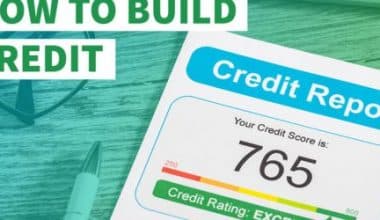Have you ever thought of a way to sell your property without the help of any financial institution and make it beneficial to your buyer as they don’t need any qualification from any traditional mortgage bank? If you’re a buyer or seller in this category, then seller financing is one of the best options. This article will take you through all you need to know about seller financing, how seller financing works, its pros and cons, types of seller financing arrangements, seller financing homes, mortgage seller financing, and seller financing car, so don’t stop reading.
ALSO READ, LOAN CONTINGENCY; What Is Loan Contingency And How Does It work?
Meaning of Seller Financing
According to Wikipedia, when a business or piece of real estate is being sold, the seller may offer the buyer a loan, this loan is what we know as seller financing. You should also know that seller financing is a type of real estate contract.
In this real estate deal known as “seller financing,” the seller manages the mortgage application process rather than a financial institution. The buyer signs a mortgage with the seller rather than submitting an application for a traditional bank mortgage.
We often refer seller finance to as owner financing. Another name for it is a purchase-money loan.
An alternative to using a conventional mortgage from a bank, credit union, or other financial institution is to use seller financing, which enables the buyer to pay the seller in installments.
Types of Seller Financing Strategy
#1. All-inclusive Mortgage:
In this scenario, the owner transfers ownership of the home to the purchaser via an all-inclusive trust deed and accepts responsibility for the whole outstanding balance of the home’s purchase price, less any required down payment.
#2. Junior Mortgage:
Often, the seller is reluctant to get into a seller-financing agreement with a buyer due to the risk involved, so instead, a second mortgage is an option available to the buyer, which would mean that the bank would provide the majority of the financing and the seller would provide the remaining funds. According to this type of contract, the buyer makes two payments: the first one is made to the bank, and they made the second to the seller.
#3. Land Contract:
In a land transaction, the buyer only receives an equitable stake in the property.
They do not transfer the title of ownership. The seller only formally transfers the title to the buyer after receiving the last payment stipulated in the signed contract.
#4. Lease Option:
The buyer has the choice, but is under no duty, to purchase real estate from the seller; but with the down payment and ongoing rent payments, the buyer has the right to own the property.
The buyer may pay the seller the remaining balance of a contract at the conclusion of the specified term. In these contracts, sellers frequently demand a sizeable non-refundable down payment in the event that the buyer decides not to purchase.
#5. Assumable mortgage:
With an assumable mortgage, a person can find a home they want to purchase and take over the seller’s current mortgage without applying for a new loan. In other words, the parameters of the loan, including the principal sum, interest rate, and repayment schedule, remain the same, but the buyer is now responsible for paying off the debt.
Pros of Seller Financing
As said earlier, seller financing has a lot of benefits for both the seller and buyer. Let’s take a look at some of them.
- Many buyers who are having trouble obtaining a traditional loan, maybe due to bad credit, are drawn to seller financing. In contrast to a bank mortgage, seller financing frequently entails little to no closing expenses and may not call for an assessment.
- In terms of the down payment, sellers are frequently more lenient than a bank.
- Additionally, the seller-financing procedure is substantially quicker, frequently concluding in a week.
- Financing the buyer’s mortgage may make it considerably simpler for sellers to sell a home
- When the housing market is weak and credit is scarce, buyers could favor seller financing.
- The seller may select the security documents (mortgage, trust deed, land sales agreement, etc.) that will best protect his or her interest until they repay the loan.
- In terms of closing costs, both the buyer and the seller might save a lot of money.
- They can bargain over the loan’s terms, including the interest rate and payback period.
- The buyer has the option to stipulate additional requirements for the purchase, such as the inclusion of home appliances.
- The borrower is not required to meet the requirements of a loan underwriter.
- The seller may be able to get a better interest rate.
- The seller might agree to a greater selling price.
- There might be no need for repairs because they could sell the property “as is.”
- The seller may select the security documents (mortgage, trust deed, land sales agreement, etc.) that will best protect his or her interest until they repay the loan.
Cons
Here are some demerits that seller financing can pose to both buyers and sellers.
- The danger of borrower default affects sellers much like it does a bank. But they are on their own to handle this risk.
- The interest rate paid by buyers will almost definitely be greater than that of a bank’s market-rate mortgage.
- You’ll need a down payment similar to a regular mortgage, or at least 20% of the property’s worth.
How Does Seller Financing Work?; Seller Financing Mortgage
In a seller-financed sale, neither the buyer nor the seller will need the assistance of a bank. They draft a promissory note outlining the interest rate, the due dates for payments from the buyer to the seller, and the repercussions should the buyer fail to fulfill his or her responsibilities.
In a transaction without a mortgage, the buyer just agrees to pay back the principal amount over time.
Usually, the buyer will provide the seller with some kind of down payment and then make installment payments (often on a monthly basis) over a certain period at an agreed-upon interest rate until they entirely returned the loan.
Simply put, this occurs when a seller lends a loan to a buyer instead of the buyer getting one from a bank during a transaction. According to the seller, the buyer’s ability to pay the mortgage or creditworthiness guarantees the investment’s return.
Because they might not be able to get a bank loan, it is frequently advantageous for the buyer. Typically, the sold property serves as security for the loan. If the buyer fails to pay, the property is seized or put up for foreclosure, much like a bank would.
How to Construct a Seller Financing Agreement
To create and review the sales contract and promissory note, as well as other associated tasks, both parties in a seller-financed agreement should use a real estate attorney or real estate agent.
This is important because it is best to seek out experts who have dealt with seller-financed real estate deals—and who, if at all possible, are local to the area in which you live. This is because some pertinent laws (like those that deal with balloon payments) can vary depending on the location.
Experts can also help the buyer and seller determine the agreement that best matches their interests and the purchase.
Seller Financing Homes in USA
Due to tightened limits on mortgage lending implemented as a result of the subprime crisis of 2008, seller financing has become more popular in the United States as a means for persons with weak credit to achieve house ownership.
In contrast to a traditional mortgage, when the buyer receives the legal title to the home immediately, in a seller-financed transaction, the buyer does not take possession of the home’s legal title until they have paid the full purchase price.
This implies that if a buyer skips a payment, they risk being evicted and losing all the money they invested in the home, as well as interest.
Additionally, the buyer frequently bears the costs of insurance, taxes, and upkeep, which means they bear the obligations of homeownership without actually owning the house.
Most states offer fewer consumer protections for seller financing agreements than they do for mortgage loans. Seller financing is viewed as exploitative by organizations like the Center for American Progress despite the fact that it can offer a novel option for those with bad credit to get a road to house ownership.
Furthermore, several investment firms have resisted participating in seller financing out of concern for their reputations. Less than 20% of those who signed a contract for seller financing in Maverick County, Texas, came to fully own homes, according to a 2012 examination of the contracts.
List of Top Seller Financing Homes in the USA
Below is a list of top seller financing homes in the USA. These homes are the best in one way or the other and you can opt for any of them if you’re looking for a seller-financed home.
- Melor communities
- Northern California homes
- Colorado homes
- Redfin homes
The homes mentioned have professionals who help the buyer and seller in determining the specific agreement that best fits their needs and the specifics of the deal.
Seller Financing Car
The sale of a car, or any other commercial transaction, can be made possible with the help of seller finance. Seller financing, also known as owner financing, is a credit extension by the seller of a certain product to the buyer of that product, while the seller also maintains the promissory note for the loan.
There are several crucial documentation and safety measures to follow if you plan to owner-finance your vehicle. Some of them include:
- Use a bill of sale as proof of your transaction: A receipt is required for every purchase as verification that they completed the transaction as planned. An invoice for a business transaction is what a bill of sale is. A car’s manufacturer, model, VIN number, and mileage should all be listed on the bill of sale for the vehicle.
- Promissory notes should be signed: The paper outlining the terms of the loan and the interest rates is known as a promissory note. If the borrower misses a promissory note payment, this instrument can be used to sue and seek repayment.
- Check your credit: They should perform a credit check on a person before you contemplate granting credit to them.
Running a credit report on someone just costs a few dollars, and there are many credit check services accessible.
When researching your prospective borrower, you should also confirm current employment by examining a recent payroll.
Conclusion
This article has explained all you need to know about seller financing and remember getting a property or homes through this means is one of the best ways to become an owner.
Seller Financing FAQs
In a seller-financed transaction, who is the titleholder?
In accordance with the rules of seller financing, the owner of the property (the home seller) keeps the title to the residence as a kind of leverage up until it completely paid the mortgage off.
What the seller financing homes available in the USA
Melor communities, Northern California homes, Colorado homes and
Redfin homes are seller financing homes available.






